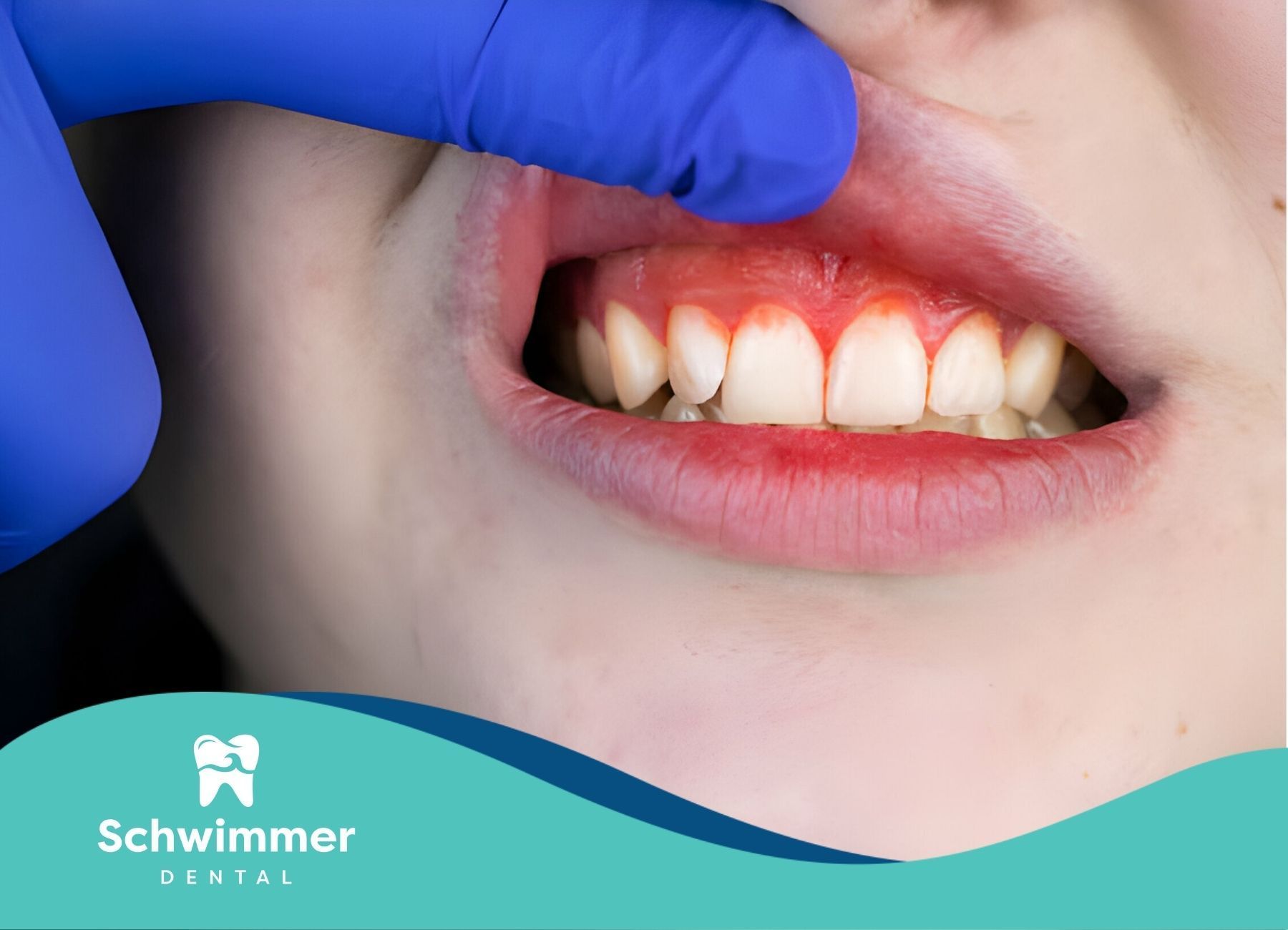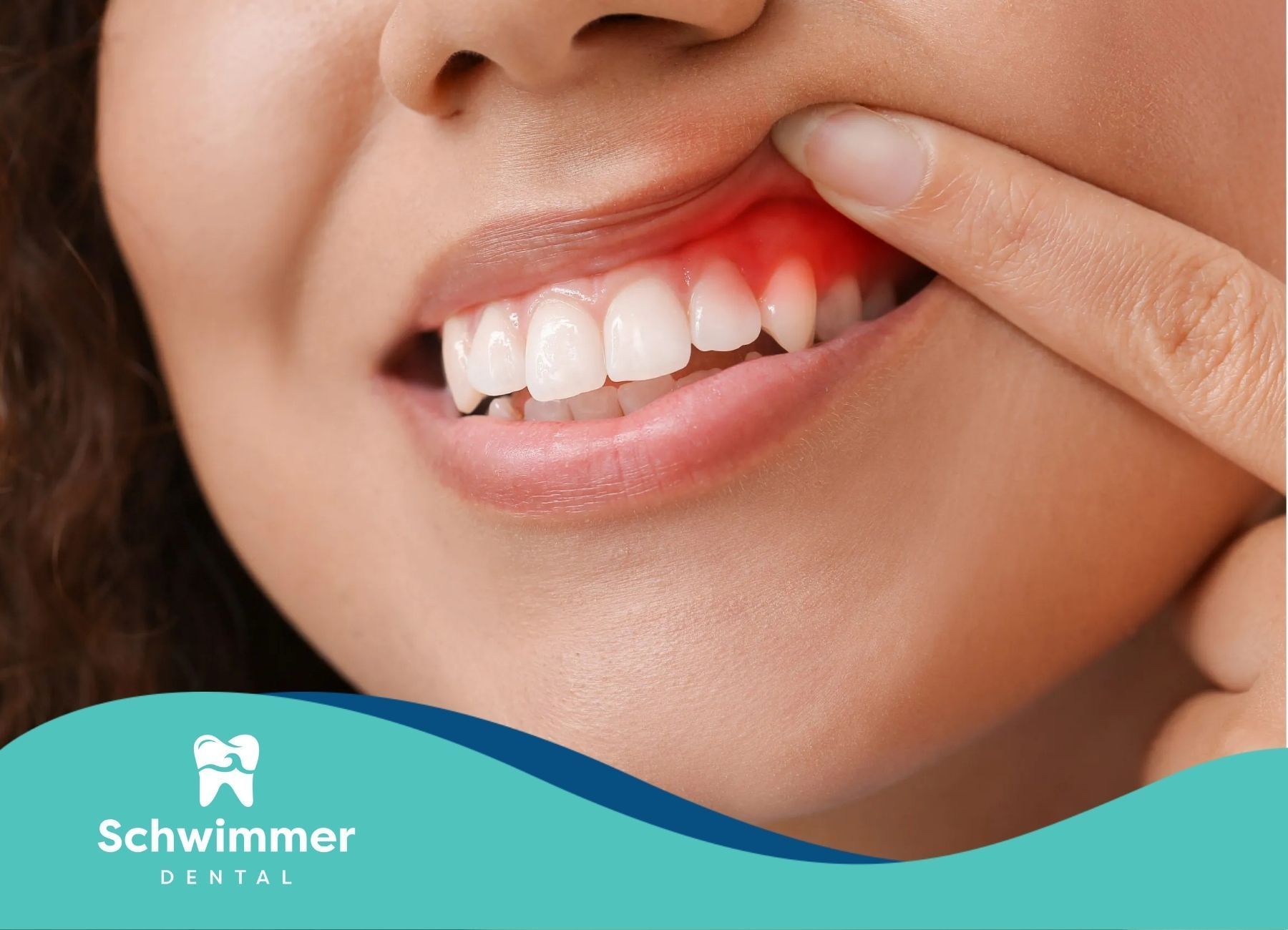Have an appointment? Complete the Intake Form
Causes of Yellow Teeth: Understanding Why Your Smile Changes
A bright, white smile is often associated with beauty and good health, but many people find that their teeth gradually turn yellow over time. While some discoloration is inevitable, understanding the causes of yellow teeth can help you take steps to prevent or address it.
In this article, we’ll explore the common factors that lead to yellowing teeth and offer solutions for maintaining a bright smile.
The Role of Enamel in Tooth Color
To understand yellow teeth, it's essential to know about the structure of your teeth. The outer layer of your teeth is called enamel, and it plays a crucial role in the appearance of your smile. Enamel is naturally white and acts as a protective coating for the inner part of the tooth, known as the dentin.
However, as we age, enamel naturally thins out, revealing the yellowish dentin beneath. This process can lead to a gradual yellowing of your teeth, especially if enamel erosion is accelerated by external factors.
Common Causes of Yellow Teeth
1. Dietary Choices: Foods and Drinks that Stain
Your diet is one of the most significant contributors to yellow teeth. Certain foods and beverages contain pigments or acids that can stain your teeth over time. Some of the most common culprits include:
- Coffee and Tea: Both beverages are notorious for staining teeth, especially when consumed in large quantities. Coffee contains tannins, which can cause stains to stick to the surface of your enamel, while tea—especially black tea—also contains tannins that contribute to discoloration.
- Red Wine: Rich in dark pigments, red wine can leave deep stains on the teeth. The acidity in wine also weakens enamel, making it more vulnerable to discoloration.
- Berries: While nutritious, fruits like blueberries, blackberries, and pomegranates can cause stains due to their vibrant colors. The natural acids in berries can also contribute to enamel erosion.
- Soy Sauce and Balsamic Vinegar: These dark-colored condiments can leave behind stubborn stains. Their acidic nature may also affect enamel health.
- Curry: Spices such as turmeric can cause yellowing of the teeth, especially if they are frequently consumed.
2. Poor Oral Hygiene Habits
Poor oral hygiene such as inadequate brushing and flossing are primary causes of yellow teeth. When you fail to clean your teeth properly, plaque and tartar build up on the surface of your teeth. Plaque is a sticky, colorless film of bacteria that forms on your teeth. If it isn’t removed regularly, it can harden into tartar, which is yellowish in color.
Tartar not only makes your teeth appear yellow, but it can also contribute to gum disease and cavities. Brushing your teeth at least twice a day with fluoride toothpaste and flossing daily can help reduce plaque buildup and maintain your tooth color.
3. Smoking and Tobacco Use
Smoking and chewing tobacco are well-known causes of yellow teeth. The nicotine and tar in tobacco products leave stubborn stains on both the surface and inside the enamel of your teeth. These stains can be difficult to remove with regular brushing and may require professional cleaning to fully eliminate.
In addition to staining, tobacco use can weaken your teeth and gums, leading to more severe dental issues. Quitting smoking can help restore your smile and improve overall dental health.
4. Aging and Natural Wear
As we age, our teeth naturally change color. The enamel thins out, revealing more of the yellowish dentin beneath. Additionally, the accumulation of stains from years of eating and drinking can make your teeth appear more yellow as time goes on.
While aging is an inevitable factor, maintaining a good oral hygiene routine can slow down the process and help you maintain a brighter smile for longer.
5. Genetics and Tooth Color
Just like your height or hair color, the natural color of your teeth is partly determined by genetics. Some people naturally have whiter teeth, while others may have a more yellowish hue due to the natural color of their enamel and dentin.
If your parents or grandparents had yellow teeth, it’s possible that you may be more prone to this condition as well. However, even if you’re genetically predisposed to yellowing teeth, maintaining proper oral hygiene and avoiding staining habits can help minimize discoloration.
6. Medications and Medical Conditions
Certain medications can contribute to yellow teeth. For example, antibiotics such as tetracycline can cause staining if used during tooth development. Antihistamines, blood pressure medications, and some antipsychotic drugs may also cause discoloration of the teeth as a side effect.
Additionally, medical conditions that affect the mouth can result in yellow teeth. For example, certain health conditions that reduce saliva production, like Sjogren’s syndrome, can cause dry mouth, which may lead to plaque buildup and yellowing teeth.
7. Fluorosis: Overexposure to Fluoride
Fluorosis occurs when there is excessive fluoride exposure during childhood while the teeth are still developing. This can cause discoloration of the teeth, resulting in white or yellow spots. Fluorosis typically happens if children consume too much fluoride from toothpaste, supplements, or fluoridated water before their adult teeth have fully developed.
While mild cases of fluorosis may not cause significant discoloration, more severe cases can lead to yellow or brown stains that are difficult to treat.
8. Acidic Foods and Drinks
Acidic foods and drinks, such as citrus fruits, soda, and carbonated beverages, can wear down enamel over time. When enamel erodes, it becomes thinner and more transparent, allowing the yellowish dentin to show through. Additionally, acidic drinks like soda can also contribute to the buildup of plaque, which can further lead to yellowing teeth.
If you enjoy acidic foods, try to rinse your mouth with water afterward to neutralize the acids. It's also a good idea to wait at least 30 minutes before brushing your teeth after consuming acidic items to avoid further enamel wear.
9. Teeth Grinding and Bruxism
Teeth grinding, also known as bruxism, can lead to yellow teeth due to the excessive wear on the enamel. Grinding can create small cracks and chips in the enamel, which makes it more susceptible to discoloration and staining. Additionally, the friction caused by grinding can lead to enamel thinning, which allows the yellow dentin to become more visible.
If you grind your teeth, consult your dentist about potential solutions, such as wearing a night guard to protect your teeth while you sleep.
10. Restorative Dental Work
While not a direct cause of yellow teeth, certain types of dental restorations, like fillings or crowns, may not match the natural color of your teeth and can become more noticeable over time. Additionally, restorations can become stained or discolored due to poor oral hygiene or the consumption of staining foods and beverages.
If you have concerns about the appearance of your dental restorations, talk to your dentist about possible solutions or replacement options that match your natural tooth color.
Preventing and Treating Yellow Teeth
While some causes of yellow teeth are unavoidable, there are many ways to prevent or treat discoloration. Here are a few tips to help maintain a bright, white smile:
- Brush regularly: Brush your teeth at least twice a day and floss daily to remove plaque and prevent staining.
- Limit staining foods: Cut back on foods and drinks that are known to stain teeth, such as coffee, red wine, and berries.
- Use a whitening toothpaste: Whitening toothpaste can help remove surface stains, although it won’t change the natural color of your teeth.
- Consider professional whitening: If your teeth are significantly yellowed, talk to your dentist about professional whitening treatments that can help restore your smile.
- Quit smoking: Giving up smoking can prevent further staining and improve your overall dental health.
- Visit your dentist regularly: Routine dental checkups and cleanings can help prevent plaque buildup and identify potential issues that may be causing yellow teeth.
Conclusion
Yellow teeth are a common cosmetic concern, but understanding the causes and taking preventive measures can help you maintain a healthy, bright smile. Whether your yellowing teeth are due to lifestyle choices, aging, or other factors, there are many ways to address and manage the issue.
If you're concerned about yellow teeth and want personalized advice on how to improve your smile, Schwimmer Dental is here to help. With professional whitening options and expert guidance on maintaining optimal oral health, our team can help you achieve the smile you've always wanted.
Frequently Asked Questions
Can yellow teeth be reversed?
Yes, yellow teeth can be reversed in many cases through professional whitening treatments or at-home whitening products. The effectiveness of the treatment depends on the severity of the staining.
How can I prevent yellow teeth?
To prevent yellow teeth, practice good oral hygiene, limit staining foods and drinks, quit smoking, and visit your dentist regularly for cleanings and checkups.
Are yellow teeth a sign of poor dental health?
While yellow teeth may indicate staining or enamel wear, they don’t always mean there is a serious dental issue. However, maintaining good oral health is essential for preventing further discoloration and maintaining a bright smile.
Resources:
- https://www.nidcr.nih.gov/health-info/oral-hygiene
- https://pmc.ncbi.nlm.nih.gov/articles/PMC9932248/
- https://www.colgate.com/en-in/oral-health/teeth-whitening/medicines-that-stain-your-teeth
- https://www.webmd.com/children/fluorosis-symptoms-causes-treatments
- https://www.healthline.com/nutrition/acidic-foods
- https://www.mayoclinic.org/diseases-conditions/bruxism/symptoms-causes/syc-20356095
Need Assistance? We’re Here to Help
We are dedicated to enhancing your dental health and well-being.
We provide personalized dental care solutions for a confident, healthy smile.
Contact us today for Professional Dental Care.

Our caring staff will help you feel relaxed and comfortable in our state of the art office. We respect your time and pledge to deliver prompt service, backed by the latest knowledge, techniques, and technology.
Email: Office@schwimmerdental.com
Tel: (848) 294-2385
Fax: (732) 899-3347
Address: 1115 Arnold Ave,
Point Pleasant, NJ, 08742
Schwimmer Dental – Website by CWS


